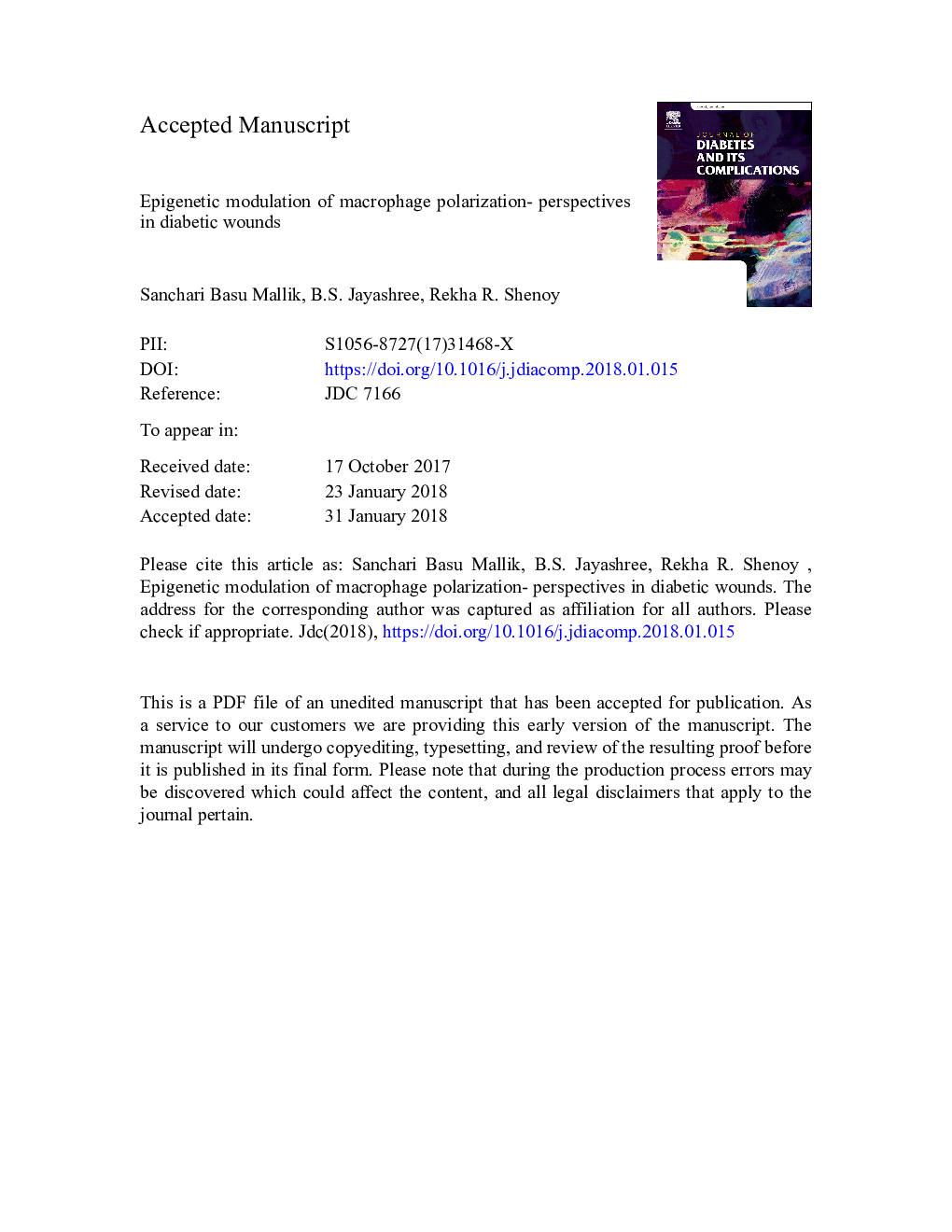| Article ID | Journal | Published Year | Pages | File Type |
|---|---|---|---|---|
| 8632129 | Journal of Diabetes and its Complications | 2018 | 30 Pages |
Abstract
Diabetes is a chronic metabolic disorder that poses a global burden to healthcare. Increasing incidence of diabetes-related complications in the affected population includes a delay in wound healing that often results in non-traumatic limb amputations. Owing to the intricacies of the healing process and crosstalk between the multitude of participating cells, the identification of hyperglycaemia-induced changes at both cellular and molecular levels poses a challenge. Macrophages are one of the key participants in wound healing and continue to exert functional changes at the wound site since the time of injury. In the present review, we discuss the role of these cells and their aberrant functions in diabetic wounds. We have extensively studied the process of macrophage polarization (MP) and its modulation through epigenetic modifications. Data from both pre-clinical and clinical studies on diabetes have co-related hyperglycaemia induced changes in gene expression to an increased incidence of diabetic complications. Hyperglycaemia and oxidative stress, create an environment prone to changes in the epigenetic code, that is manifested as an altered inflammatory gene expression. Here, we have attempted to understand the different epigenetic modulations that possibly contribute towards dysregulated MP, resulting in delayed wound healing.
Keywords
MYD88MCP-1PAMPHDACTLRTGF-βPMNVCAMSUMOSucrose non-fermentingLSDIGFIRFM-CSFNF-κBSNFROSTRIFSTATmyeloid differentiation primary response 88TIR-domain-containing adapter-inducing interferon-βinterleukinTransforming growth factor βSETtumor necrosis factor-αTIRToll-like receptorWoundCytokinesGranulocyte colony stimulating factorInsulin-like growth factorG-CSFTNF-αnuclear factor kappa BMacrophage polarizationpolymorphonuclear leucocyteslow density lipoproteinLDLMacrophagesSignal transducer and activator of transcriptionvascular adhesion moleculehistone acetyl transferasehistone deacetylaseHyperglycaemiapathogen associated molecular patternmonocyte chemoattractant protein-1HATsmall ubiquitin-like modifierReactive oxygen speciesToll/interleukin-1 receptor
Related Topics
Life Sciences
Biochemistry, Genetics and Molecular Biology
Endocrinology
Authors
Sanchari Basu Mallik, B.S. Jayashree, Rekha R. Shenoy,
